The weaving together of photographs
In this second guest lockdown blog, Tim Smith, a photographer who has written two previous blogs for us and has been ‘with’ us since the start of the Migration Museum Project, sifts through old photos he and his father took of the Caribbean and asks how photographic memories control the narratives we spin of our presents.
We live in uncertain times. During the early days of lockdown I spent a lot of time scrolling through news feeds, trying to figure out what was happening and anticipate (or guess) what would happen next. Now, with lockdown easing, even those of us living comfortable lives in the UK, with futures that previously seemed reassuringly mapped out, remain unsure of where we are headed.
Faced with a present and a future full of doubt, the temptation is to look back. Over the last few months, as the pace of life has slowed, I’ve had plenty of time to reflect upon the past. My profession, working as a freelance photographer who makes pictures of people, is completely at odds with lockdown. As my work has dropped off a cliff, I’ve had the space to look at some of the photographs I’ve taken over the past 40 years. Although I have the advantage of a huge archive of images to help me remember where I’ve been and what I’ve seen, I’m aware of how the past can seem uncertain too. For all sorts of reasons.
The vast majority of my pictures were taken on assignments, either self-imposed or for clients; but I also have my fair share of family photos. All are evidence of certain events happening in front of my camera, but they are not a full and simple story. Looking at them reminds me that the construction of our histories and identities – be they personal, national or international – is often based on a process of selective myth building, with images playing a vital role in what we choose to remember, and how.
The family album plays a large part in writing a family history, but reveals only part of it. We decide which events to photograph. The act of making pictures involves choosing where to stand and when to press the shutter, and thus we make decisions about what is included in the frame and, perhaps more importantly, what is not. Then we edit them (hopefully!) and decide where, how and by whom they will be viewed. Like most, my album is full of pictures of family holidays, playing out and moments of celebration. They are just snapshots of a much larger story, chosen and motivated by a desire to mark the good times.
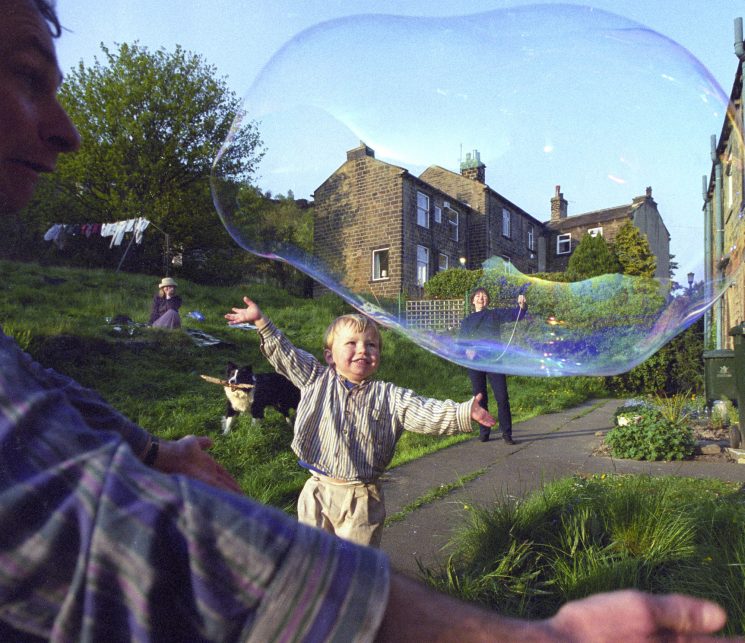
My family and I playing with bubbles in our back garden in Bradford, 2001. ©Tim Smith
Was life really like that? Not all the time. Like much of what survives from the past these collections of images need to be put in context, fleshed out via careful consideration of the stories that they are designed to tell and those that are missing. I find echoes of this in the current debate around public statues. Historical figures displayed in prominent places do not teach us a full and indisputable history (nor is history erased by their removal to other spaces). They are what the sculptor Anish Kapoor aptly describes as ‘emblematic monuments to our past which can be thought to represent how we see ourselves and our history’. In many ways, family albums do a similar job. They act as motifs of identity and of what we hold dear, but within enclosed and personal spaces, telling stories about particular groups of people to self-selecting audiences. Statues differ in that they are designed to be seen by all. Put upon pedestals, they seek to impose a public narrative upon us all, so it’s hugely important to ask: What version of reality do they represent, to whom does this belong, and what and where are other stories that should be part of this history?
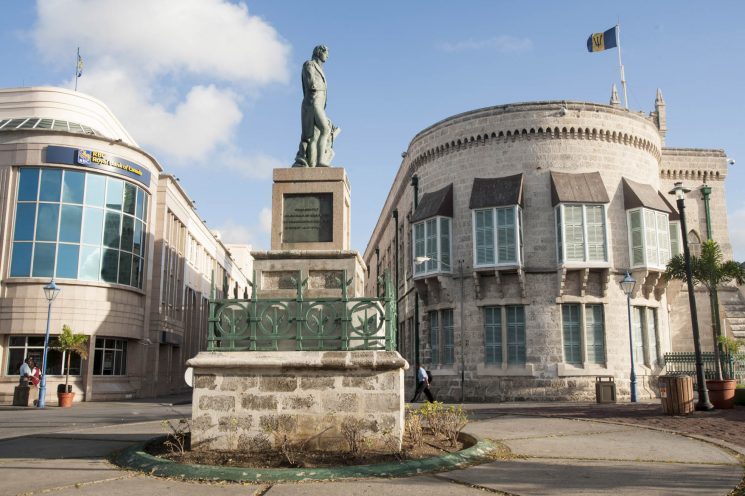
The statue of Lord Horatio Nelson that stood opposite the Parliament Buildings in Bridgetown, Barbados. It was erected in 1813 in Trafalgar Square, a name that remained until 1999, when it was changed to National Heroes Square, in honour of the ten national heroes of Barbados. Photo taken 2010. ©Tim Smith Note: The statue was removed in November 2020 and rehoused in the Barbados Museum.
Using photographs as catalysts for uncovering hidden stories is a device that I’ve employed throughout my career, and one I recently used for a scheme designed by Bradford Council to provide cultural activities encouraging people to interact with each other and create a sense of community during the lockdown. Now that physical gatherings to mark Windrush Day were cancelled, I worked with members of Bradford’s Caribbean communities to use photographs taken by myself and my father for a series of on-line Caribbean Conversations hosted via Zoom. My father’s photos were taken during the 1950s and ’60s when he travelled the Caribbean from our home in Barbados; my own have been taken since 2010, when I’ve made several trips back to photograph those islands which have close links with communities in Britain.
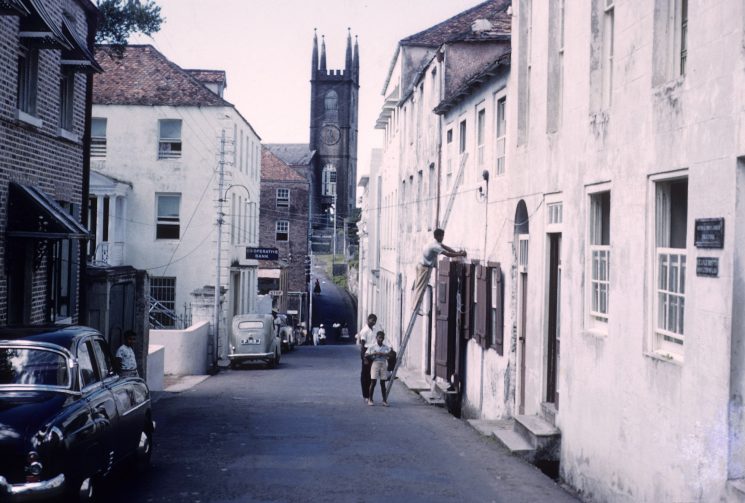
A view of St Andrew’s Presbyterian Church in St George’s, the capital of Grenada, taken in the 1960s by Derek Smith. ©Tim Smith
As I wrote in a previous blog, ‘Island to Island’, sharing these photographs sparks all sorts of memories and reflections about life both ‘over here’ and ‘over there’. Many themes are easily anticipated, such as conversations about the role of the church, the pros and cons of close-knit communities, or the merits of different kinds of fish, mangoes or rum. Others are quite unexpected. There was a long and often hilarious discussion about the hierarchies of accents, languages and how parents would expect their children to speak ‘The Queen’s English’ as opposed to the patois they used among themselves. Some people missed the sound of the sea, sweeping the yard or petrichor, the scent that fills the air after warm, heavy rain falls on hot earth.
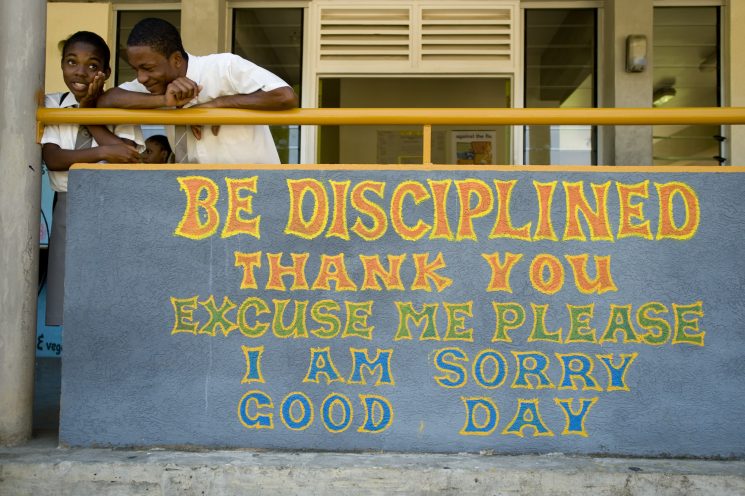
A mural of polite phrases at the Pierre Charles Secondary School in Grand Bay, Dominica, 2010. ©Tim Smith
Some, however, didn’t miss the climate at all. Muriel Drayton left Barbados as a twenty-year-old when she and her sister, like many other young women she knew, were recruited by a nursing agency. In 1956 she came to Burley in Wharfedale, a village that’s part of the Bradford District, after a nineteen-day journey from Bridgetown to London’s Victoria Station.
When I arrived, it was so dark. I was worried England was dark like this all the time, but it was the fog! You could scarcely see. But I do prefer the cold weather to the heat, which I can’t stand very much. The Nursing Council was there to meet us nurses, and I was sent by train all the way from London to Burley, Scalebor Park Hospital. They met me there with my suitcase and when I got to the nursing home, it was all Barbadian ladies! All Barbadian nurses. The girls there were the Bovell sisters, three Warner sisters, and my sister and I. On the men’s side, it was Jamaicans and a Barbadian. We had a good life there.
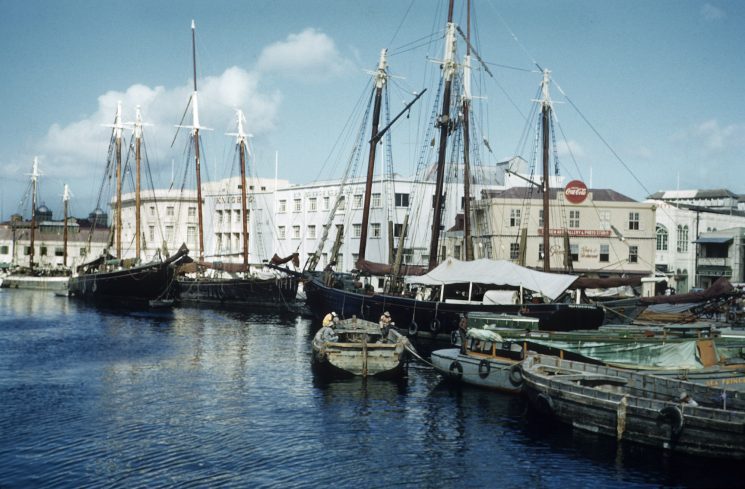
Sailing ships moored in the Careenage, the main harbour in Bridgetown, in 1956, the year Muriel Drayton left Barbados.Photograph taken by Derek Smith ©Tim Smith
As with meeting old friends, the past can offer reassurance but it is often a complicated place which raises many questions. What evidence we use to attempt to understand it, including photographs or public statues, needs careful consideration and interpretation. History needs to be inclusive. I find photography can help us make it so. One of its strengths is to help facilitate the weaving together of historical narratives with personal stories. When this is done well, it can help people relate themselves to others whilst promoting the discovery of a shared sense of the history and shape of our diverse society, and how or where we all fit into it. Without that understanding, I’m not sure we have much idea of who we are, never mind where we’re going.
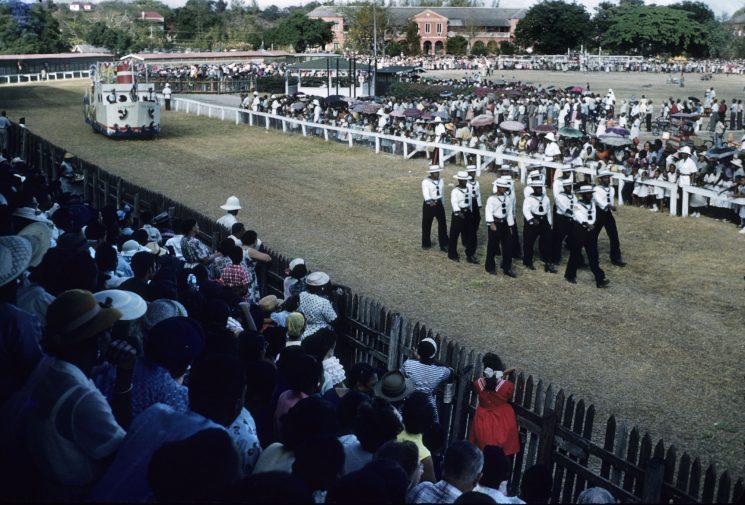
A parade makes its way around the Savannah racecourse near Bridgetown, part of the celebrations marking Barbadian Independence Day on the 30th November 1966. Photo by Derek Smith ©Tim Smith
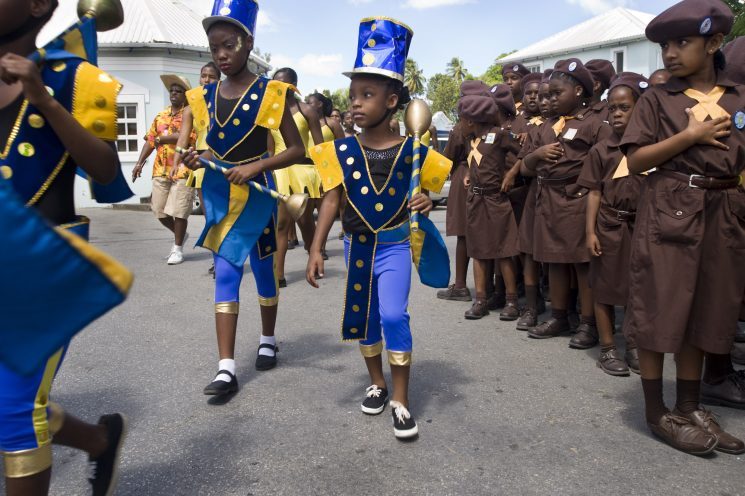
A group of American-style majorettes stride past a group of Brownies at the Holetown Festival in Barbados, 2010. ©Tim Smith
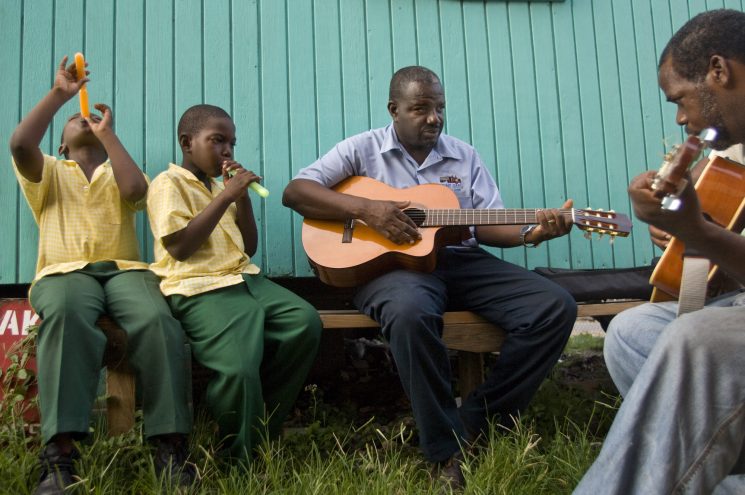
A guitar lesson in a backyard in St John’s, the capital of Antigua, 2011. ©Tim Smith
Tim Smith is a photographer, based in Bradford, who has contributed photos and blogs to the Migration Museum Project since 2011. His website carries many of his photos. The Caribbean Conversations project was supported with a Response grant from Bradford Metropolitan District Council.


Leave a Reply